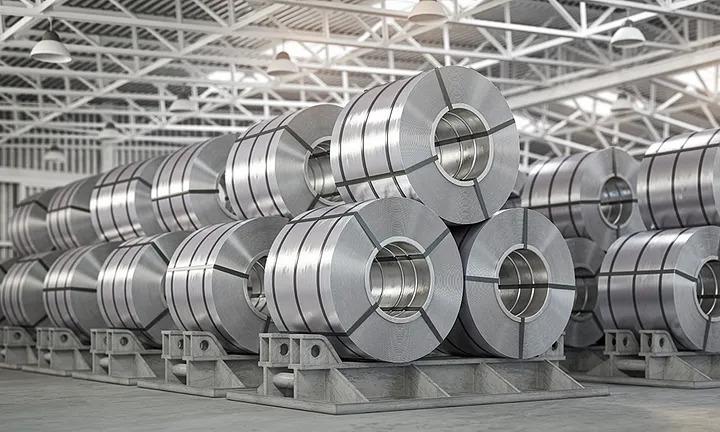Discover the Saudi Arabia Steel Market Growth 2030, exploring key trends, emerging opportunities, and market forecasts. Learn how factors like infrastructure development, industrial expansion, and sustainability initiatives are shaping the future of the steel industry in the region. Stay ahead with insights into major players and investment potential.
Steel Industry in Saudi Arabia: Market Overview and Growth Drivers
The steel industry is a vital part of Saudi Arabia's economy, significantly contributing to its industrial diversification and infrastructure development. As the kingdom accelerates its ambitious Vision 2030 plan, the steel sector is poised for robust growth, driven by large-scale infrastructure projects, economic reforms, and increased investment. This blog post provides an overview of the current state of the Saudi steel industry, its key growth drivers, challenges, and future outlook.
Market Overview
Saudi Arabia’s steel industry has experienced steady growth over the past decade. The country is one of the largest producers and consumers of steel in the Middle East. According to recent data, the Kingdom’s steel production capacity exceeds 10 million metric tons per year, with major producers such as Hadeed (a SABIC subsidiary), Rajhi Steel, and Al Yamamah Steel Industries leading the market.
The sector is characterized by a diverse range of products, including rebar, wire rods, and structural steel, primarily catering to the construction and infrastructure sectors. Despite global challenges, the domestic steel industry has remained resilient, supported by strong government policies and demand from key sectors like construction, oil and gas, and manufacturing.
Key Growth Drivers
- Vision 2030 and Economic Diversification: The Saudi Vision 2030 initiative aims to reduce the Kingdom’s dependence on oil by diversifying its economy. This strategic shift has led to a surge in infrastructure projects, including the development of smart cities like NEOM, Red Sea Project, and the Qiddiya entertainment city. These projects are creating significant demand for steel products, especially in construction and urban development.
- Infrastructure and Construction Boom: The construction sector is a primary consumer of steel, and Saudi Arabia’s construction boom is a major growth driver. Large-scale projects such as the Riyadh Metro, Jeddah Tower, and various housing schemes are expected to fuel demand for steel, particularly long steel products like rebar and wire rods.
- Industrial Development and Manufacturing: In line with Vision 2030, the Kingdom is focusing on developing its manufacturing base. The establishment of industrial zones and increased investment in the automotive, defense, and machinery sectors are boosting demand for steel. The growth of the local manufacturing sector is essential for creating a sustainable steel demand cycle within the country.
- Government Policies and Support: The Saudi government has implemented several policies to support the steel industry, including protective tariffs on imported steel and financial incentives for domestic producers. The introduction of the National Industrial Development and Logistics Program (NIDLP) aims to transform Saudi Arabia into a global logistics hub, further increasing the demand for steel infrastructure.
- Technological Advancements and Sustainability: The adoption of modern technologies, such as electric arc furnaces (EAF) and automation in production processes, is enhancing the efficiency and sustainability of steel production in Saudi Arabia. This shift not only improves operational efficiency but also aligns with global trends towards environmentally sustainable manufacturing.
Challenges and Opportunities
Despite its positive outlook, the Saudi steel industry faces several challenges. Global economic uncertainties, fluctuating raw material prices, and competition from imported steel are some of the issues impacting the sector. Moreover, the industry must navigate regulatory changes and adapt to new standards in quality and sustainability.
However, these challenges also present opportunities. The push towards localization and self-sufficiency offers local producers a competitive edge. There is also significant potential for innovation in steel production, including the use of renewable energy sources and the development of high-performance steel products.
Future Outlook
The future of the Saudi steel industry looks promising, with expected growth driven by continued investment in infrastructure and industrial projects. As the Kingdom progresses with its Vision 2030 goals, the demand for steel is likely to increase, supported by a stable regulatory environment and proactive government policies.
In conclusion, the Saudi steel industry is at a pivotal point in its development. With strong growth drivers and strategic government support, the sector is well-positioned to play a critical role in the Kingdom's economic transformation. As the industry evolves, it will be crucial for stakeholders to focus on innovation, sustainability, and competitiveness to ensure long-term success.
Contact Us
Office No 6, Unit 402, Level 4,
Crystal Tower, Business Bay,
PO Box 445190 Dubai, United Arab Emirates
Mobile: +971 55 9744360 | Phone: +971 4 566 8869
Website: https://www.glasgowinsights.com

